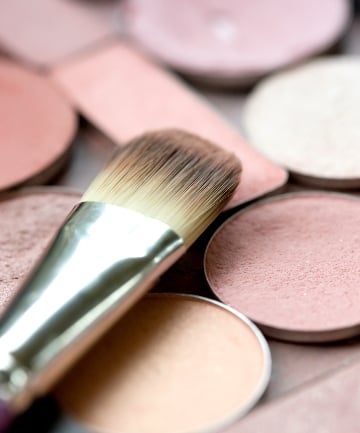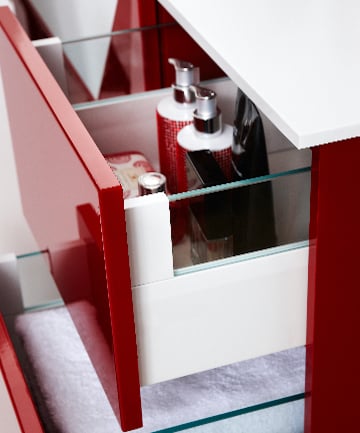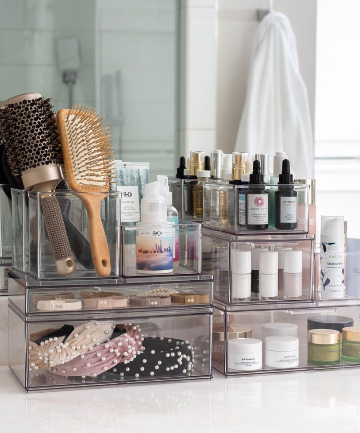Next, you'll want to create categories of products and items. Rosenthal notes this will be slightly different for everyone since we all have different items and routines. The key is to create category piles that make sense for you — like hair care, foundations, medicines, tools, palettes, etc.
"Review your categories for duplicates and declutter where possible," advises Rosenthal. "For example, do you really need 12 mascaras? Are you ever going to use that clarifying shampoo that you can't stand the smell of?"
Having "like with like" will allow you to see what you have more easily to be able to part with the items you don't need. Oh, and also take note of the items you may need to restock. Two birds, one stone!
Image via drewhadley/Getty
"Review your categories for duplicates and declutter where possible," advises Rosenthal. "For example, do you really need 12 mascaras? Are you ever going to use that clarifying shampoo that you can't stand the smell of?"
Having "like with like" will allow you to see what you have more easily to be able to part with the items you don't need. Oh, and also take note of the items you may need to restock. Two birds, one stone!
Image via drewhadley/Getty
Let's go back to that vision you created for yourself. Before putting items back, reflect on that vision and purchase any organizational shelves, trays, or accessories you might need.
"Storage should always support how you want to get ready for the day. It should be both fun and functional, per your vision," says Ivey. "Your 'representatives' — meaning products that you actively use and love — should be readily accessible inside a top drawer, bin, shelf, or pouch. Meanwhile, backstock or alternative products can be stored further away until it's time for them to shine."
Try not to stress too much about the storage aspect. Instead, really prioritize the function of your space and it'll fall into place better.
Image via Onzeg/Getty
"Storage should always support how you want to get ready for the day. It should be both fun and functional, per your vision," says Ivey. "Your 'representatives' — meaning products that you actively use and love — should be readily accessible inside a top drawer, bin, shelf, or pouch. Meanwhile, backstock or alternative products can be stored further away until it's time for them to shine."
Try not to stress too much about the storage aspect. Instead, really prioritize the function of your space and it'll fall into place better.
Image via Onzeg/Getty
Now that everything has its place, it'll be much easier to stay organized. (Labels help, too!) To really help keep things organized, commit to a monthly refresh. Organizational work is far less tedious when you do it in small increments versus all at once.
"You don't have to do a full, deep declutter and organization each month, but setting aside a little time to do a quick once-over of the space to put everything away and tidy up will help your bathroom from getting out of control," says Rosenthal.
Image via @rachelorganizes
"You don't have to do a full, deep declutter and organization each month, but setting aside a little time to do a quick once-over of the space to put everything away and tidy up will help your bathroom from getting out of control," says Rosenthal.
Image via @rachelorganizes





